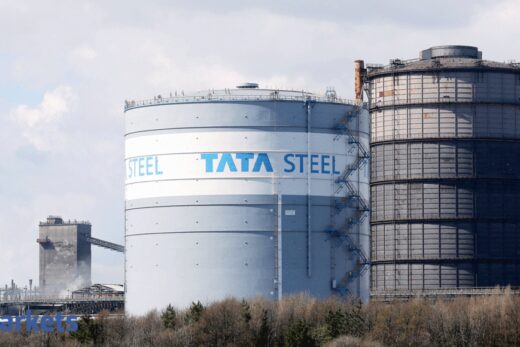The global commodity rally has not left aluminium behind as prices of the metal have now crossed about $2,000 on the LME. Help us understand how this is going to impact life for you?
If you look at our EBITDA for aluminium in Q4 at Rs 1,610 crore, this is an all-time high in the history of the company; 27% EBITDA margin. This is a result of two things. One was the LME average of Q4 was about $2,000, but equally important was our cost of production of aluminium being quite controlled. It was only 1% higher than Q3. That is why the drop through in the margin was quite strong. We were also hedged nearly 50%. That is why our upside was not fully captured. Even then we made a 27% margin.
Now going forward in Q1, our hedge percentage is much lower. It will drop to about 25-30%. I think that we will be able to capture more of the upside and as you said the LME in the Q1 is already running at about 2,400 compared to 2,000 in Q1. The cost of production will go up, but not as much as the LME has gone up. So, the margins will be much better in Q1.
LME copper has now crossed $1,000, but how are the TCs as well as RCs? Why have copper business margins dipped so much despite the revenues close to doubling?
Well problem being TCs, RCs are at all-time low. Generally, what happens when copper prices go up, TCs, RCs tend to go down. What has happened is that there is a big shortage of copper concentrate on the market. So, custom smelters like us get given refining and conversion charge and when the supply of concentrate is very tight, the amount that they pay you to convert it to copper goes down. So, TCs, RCs are quite low. Hindalco does not really benefit from high copper prices. We only benefit when TCs, RCs are high, unlike in aluminium.
Your copper business has seen a pickup in volumes, but we are also seeing a major shortage when it comes to copper in India. When do you see your new facilities coming through in order to fill that void?
We still have a smelter three shutdown planned in Q1, but let me tell you that our customers will have no impact because what we have done in preparation for this shutdown and even last year when we had the smelter one shutdown, we have imported copper cathodes. So, our customers should not have any problem with the copper that they need. I think in Q1 our results will be impacted because smelter three will be shutdown most of April and May. Once that is over from quarter two onwards, copper should have a pretty steady performance going forward.
On raw materials while LME has risen, scrape prices, other raw material costs have also seen an up move so how much of a threat is that now to margins going forward and what sort of savings has Utkal delivered for you in the middle of this environment?
So input cost let us talk about it because there is certain a cost inflation starting to play out now. So for us CP coke and pitch prices have quarter on quarter risen about 18%. Coal prices have started to go up again as we have to buy on the e-auction market. So overall as we said we are expecting Q1 cost of production of aluminium to be 4% higher than Q4 so that is the level of cost increase that we are seeing
Let us talk about Novelis, where with every passing quarter the profits for you are only increasing. Do you expect the strength in the auto and beverage businesses to continue?
Absolutely. I think that if you look at four sectors for Novelis, can is extremely strong because people are preferring can to PET bottles, etc. because of the sustainability angle. So, the can market is very strong. Auto is quite strong because of electrification and light weighting trends that continue. The specialty markets which are building and construction, truck and trailer have been doing very well for Novelis. And the fourth sector is aerospace. That is the only sector that is weak for Novelis because air travel has not picked back up and it will probably take a couple of years for it to pick up. So, for Novelis, out of four, three sectors are very strong.
Is Novelis’ capex in China on track? It is a project closely watched by analysts because of its potential to expand margins. Any challenges or delays that you anticipate, especially on the geopolitical front or because of China’s new de-carbonisation stance?
Absolutely not. I think for us, we are going to add a cold mill in Zhenjiang which has nothing to do with carbon footprint, etc. We plan in the next couple months we will be breaking ground there. Novelis has a 600 to 700 million capex plan for this year and one large part of that is the China project because it is a part of the synergies with Aleris as well that we had announced. So, we will be certainly trying to do that project as fast as possible.
Aleris so far in FY21 has been giving synergies on more than $150 million and delivering an EBITDA of about $200 million. How do you see this business ramping up in FY22 and beyond?
I think generally for Aleris, the aerospace is slowly starting to come back. We are quite confident. We have said that Aleris will be around 350 million tons EBITDA; that is the Aleris business that we had retained. We are quite confident of getting there. You will see in FY22 the businesses will be contributing a lot more than the 200 million that they did last year. So yes, aerospace will take some time, but the other parts of Aleris are doing quite well.
A lot of your new projects in India are focussed on value-added products and margin accretion. You are also looking at catering to sectors which have a relatively low aluminium usage in India. How do you see your overall volume picture increasing as your capex progresses through this payback period?
Most of these projects have an IRR from 15%, so they are like six years of payback. But soon we can get capacity and the demand is there in the Indian market because the Indian economy is growing. Now if you take this whole Covid year that we have gone through, semi-rigid containers for food delivery — the demand has gone up by 100%. Food and packaging, pharmaceuticals, all these are very aluminium intensive. Hence, the demand has been extremely strong.
The more traditional sectors like transportation, auto, building and construction are also slowly coming back now. So fundamentally, the aluminium demand in the downstream in India is quite strong. It is up to us to ramp up the capacity as quick as possible because today we are at about 300 KT, next year we have targeted 330. Then we have downstream projects like Silvassa extrusion coming on, so we intend to double from 300 to 600 KT in the next three to five years.
You have managed to bring down the consolidated net debt to EBITDA to about 2.59 times. With your new capital allocation policy which devotes about 30% FCF to deleveraging, when do you target to reach the pre-Aleris acquisition debt levels?
We would like it to be in the low 2s. We have consistently said that at 2.59, we are at the pre-Aleris levels of net debt to EBITDA. This year Novelis will pay down another 600-700 million of debt and we plan that by the end of this financial year we should be in the low 2s for the net debt to EBITDA.



